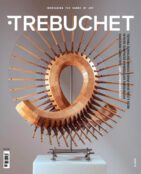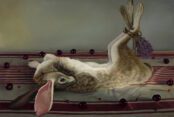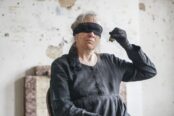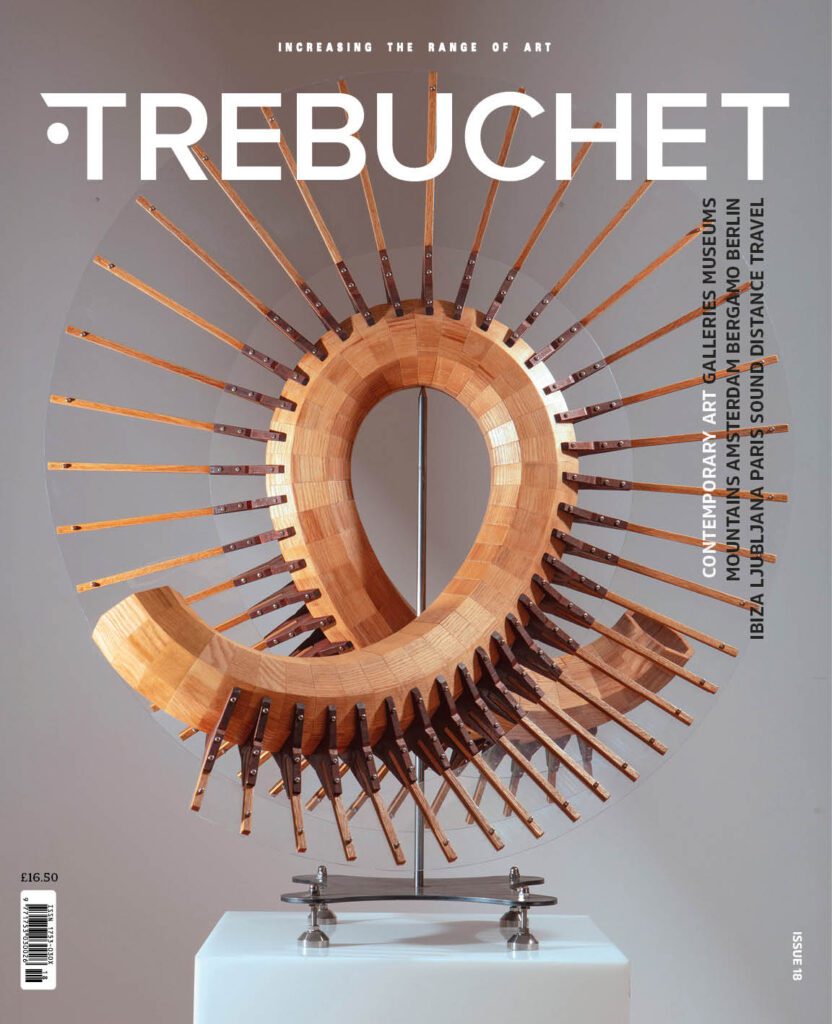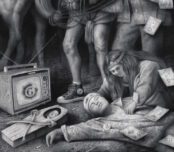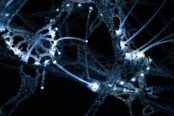Professor Malcolm Quinn is a key intellectual researching the culture and history of the art school and general discourse in art and design.
He is Professor of Cultural and Political History, Associate Dean of Research and Director of Graduate School for Camberwell, Chelsea and Wimbledon Graduate School, University of the Arts London.
Psychoanalysis has the character of a Promethean wound in that it has survived so many debunkings and re-interpretations to grow back and undergo another renewal and return to its foundations in a rhythm that would more than likely amuse its founder.
Michael Eden discusses psychoanalysis and art with him in a two-part interview for Trebuchet.
It is now approximately one hundred and twenty years since Freud formulated his ideas and created psychoanalysis. Since that point, Freud’s dream of widespread acceptance of his theory has never fully come to pass, but despite continued attacks from alternate theoretical frameworks and threatened irrelevance from the brain sciences, Freud’s ideas persist and offer serious challenges to the would-be usurpers.
In the arts, psychoanalysis proves a compelling subject for, or companion to, art making – inspiring first the Surrealists and subsequently such significant artists as Louise Bourgeois, Antony Gormley and Damian Hirst (to name a few). However, since the most scathing and convincing criticism of surrealism came from Freud himself, we can safely say that incorporating psychoanalysis is always problematic.
To explore if this is a necessary problem, Professor Malcolm Quinn shares his thoughts on psychoanalytic approaches in art and design.
M Eden: One of the first things I wanted to ask you about is an idea that you introduce in ‘Knowing Nothing Staying Stupid’: the fall of knowledge. You relate this to the relationship in psychoanalysis between the analysand and the analyst. This is a difficult point for people to accept since we are often led to believe that knowledge is power.
M Quinn: The first thing to say is that I wrote that book with professor Dany Nobus of Brunel University and it was very much a joint effort. The thing we were most keen to point out in the book was that the only knowledge that’s at stake in psychoanalysis is unconscious knowledge, that psychoanalysis itself doesn’t represent a coherent body of knowledge that you then apply either to someone in the clinical situation, or to an artwork or something else, but really that the whole point of psychoanalysis is to put oneself as analyst in the position to receive whatever is emerging from the unconscious of the analysand
1. As Freud pointed out in his introductory lectures the whole point of psychoanalysis is that the analyst knows nothing! This is a hard point to accept because this suggests that if you don’t know anything then you can’t do any interpretation, you can’t do any interpretation because the interpretation is being done by the analysand¹ who is constantly interpreting whatever is in tension in the unconscious.
(¹Person undergoing psychonalysis)
M Eden: A lot of artists have an interest in the unconscious, but you have said that the nature of this is often misinterpreted by creatives. In what sense?
M Quinn: The unconscious isn’t a lumber room full of stuff, the unconscious is what is currently impossible in your life because your life is set up in a certain way. The unconscious is what is implicit but not allowed, or is in some way repressed, foreclosed or forbidden in the way a person’s life is currently constructed. So what is unconscious emerges precisely as a fall of knowledge, of knowledge of one’s self, so even as you are aiming to make a definitive statement, something trips you up; you have a slip of the tongue and that slip of the tongue represents the fall of knowledge insofar as it’s the fall of explicit conscious knowledge into the realm of unconscious knowledge.
It’s like the truth of unconscious knowledge appearing within the conscious effort to make a definitive statement. This is also why in psychoanalysis the ‘truth’ isn’t teleological, it’s not about the end, you don’t get the truth at the end, the truth emerges as cause, the truth is what caused you to make a slip of the tongue, the truth is what causes you to do something out of the ordinary.
The unconscious truth is what emerges in symptoms in types of behaviour and out of the refusal to accept certain potentialities and possibilities. It’s not as if psychoanalysis is about being clever or stupid but the impossibility of being clever, because even as you set yourself up to be clever the unconscious is going to find a way to emerge in ways you don’t expect.
M Eden: How do you help someone to understand that, someone who is of the opinion that knowledge is empowering: the more I have the better off I am, the more options I have, the better I am at accessing aspects of society? People see themselves as needing this to be able to move forward, to be employable, or tackle problems that emerge.
M Quinn: I suppose I might say, for example, if you know more and more and more about the recent financial crisis and more and more and more about bankers’ bonuses, does that actually help you to get any agency or grip on this world? It simply gives you more and more information and adds to a sense of being powerless to affect anything in any way. Yes, we are taught at school that knowledge acquisition is a good thing, but we constantly come up against situations in life where the more knowledge you gain the more embedded you are in the situation you’re trying to
M Eden: In what sense then do you feel people get this wrong when they try to use the unconscious in their work or as a subject for art?
M Quinn: The point about the unconscious is that it doesn’t emerge where you want it to, it emerges within close attention to structures of speech and language, and I’m particularly interested in the construction of speech and knowledge and understanding in an art and design context.
For example at the Tate (during the Turner prize) I saw that they had asked people to write down comments on post it notes and stick these to the wall so everyone could see them. It was an attempt to democratise the commentary on art. Someone had written: ‘What is the function of artists in society? I still don’t know after this exhibition!’ I thought that was a great question because you might say that in the art world, artists/critics and curators are always functioning, but are they acknowledging their function? Do they know how they’re functioning?
M Eden: In what way does psychoanalysis help us to understand this blank spot?
M Quinn: In a strictly Freudian sense, if the analyst knows nothing and the person being analysed knows something, but doesn’t know they know it (because it’s unconscious/repressed) in this sense artists/art institutions could claim they know how they’re functioning. Perhaps on some level they do, but they don’t know how they know it and the ways that this knowledge prevents them from really seeing how they fit into society. Or a broader picture, for example, perhaps they see themselves free of function, they’re not a part of the system they’re above it, commenting in a very self-aware way.
M Eden: Like the supposed openness of the Tate to ask people to display their opinions, as if it’s the opinion that really matters, rather than simply standing for openness itself with no real agency offered?
M Quinn: Exactly, then someone comes along like a Lacanian hysteric talking to the master and says ‘I don’t know how you’re functioning! Tell me how you’re functioning!’ That, I would say, is the emergence of the unconscious, because it’s about the construction of discourse, it’s about the point where something emerges which reveals a point of impossibility. It shows an obstacle or a difficulty of speech: ‘Tell me how you’re functioning!’…. ‘No I can’t, I don’t function! I’m not part of a system, I’m a free agent!’
M Eden: Would you say then that knowledge of psychoanalysis prevents a person taking too grand a position and forces them to reflect on the implications of their work?
M Quinn: Well it makes me think about a film: The Five Obstructions by Lars Von Trier, in some ways it’s a drama where the son kills the father, Von Trier goes back to his old mentor Jørgen Leth and says, ‘I love your film The Perfect Human it’s a great film and now we’re going to remake it five times’. Part of the point of Von Trier asking Leth to remake his film is that he’s saying, you ask questions with this film but you never answer them; he’s trying to say these films are unfinished, they need to be done again.
In a sense the idea of taking ‘The Perfect Human’, which is also a perfect little film (it shows a contemporary couple doing things in a surreal space as a kind of celebration of modernity) and ripping it apart, being cruel and doing odd things (like saying to Leth ‘Go to worst place in the world and make this film again but don’t show the place’, so Leth goes to the Bombay red light district and puts up a semi-transparent screen and Von Trier says ‘No, you’re showing it, do it again!’) is horrible in one sense: it seems vicious, but what Von Trier is after is a certain sort of rigor.
He’s saying ‘You raise these questions, why don’t you answer them?’ and I think there is a lot of question raising in contemporary art, a lot of bids for ethical value, a lot of bids for content and relevance, but at a certain point you can say: ‘Well, you say these things but how far are you going to go? You claim these positions, these relevancies, these contexts, but to what extent?’ At one point Von Trier says to Leth ‘Would you make this film in a refugee camp?’ Leth says of course not, so there’s a probing of ethical limits.
M Eden: And this probing of ethical limits is a part of your research and comes from an understanding of psychoanalysis?
M Quinn: A lot of the thinking I do about psychoanalysis and the arts is around notions of research. There’s a famous text by Freud on Leonardo da Vinci where he said Leonardo was a researcher and an artist, and often the researcher in Leonardo got in the way of the artist so he couldn’t finish anything. What Freud posits is that there is an artist da Vinci who couldn’t finish a painting because his research got in the way. You have a practice and a problem within it: I can’t finish, and I paralleled that with a story from Jacques Lacan from his seminar on ethics where he goes to visit his friend Jacque Prevert in Paris during the Vichy period. It’s World War Two, they’re all starving, and Prevert has put around the room some matchboxes. He’s taken out the matchbox drawers and stuck them into the next matchbox to make a large odd looking chain that you can never finish.
Lacan says this is an interesting thing, he compares it to the Freudian idea of the drive. The point about this is that if you have a practice you can say ‘I have a practice with a problem’, I can’t finish something. But if you shift the position to one of research you can say ‘I can make a practice out of the problem’. In the case of Prevert, you’ve got something and it never finishes, so you actually rebuild the practice around the problem and that’s a different way to look at it.
Read On: The Architecture of a Problem (Part Two)
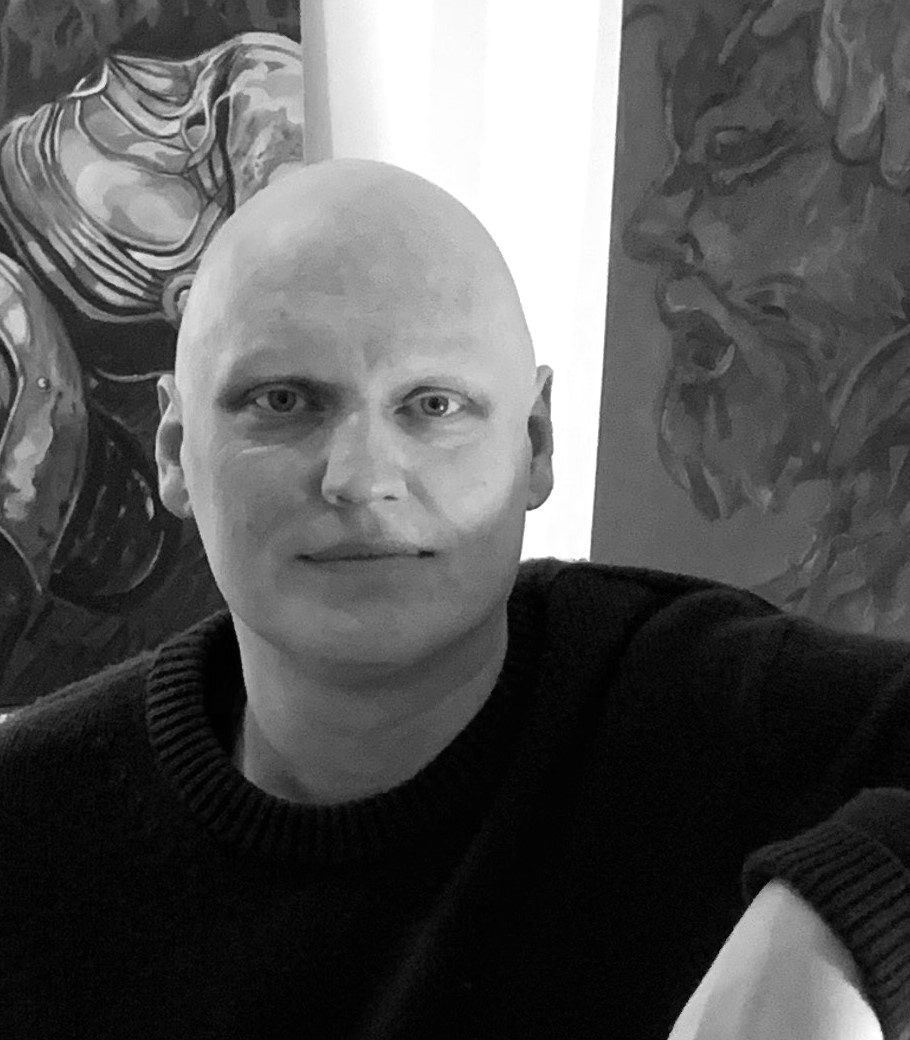
Michael Eden is a visual artist, researcher and writer at the University of Arts London exploring relationships between monstrosity, subjectivity and landscape representation.




